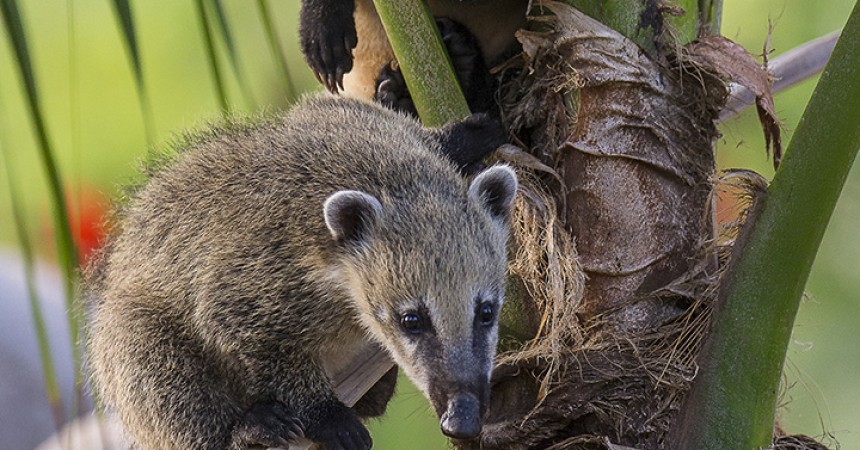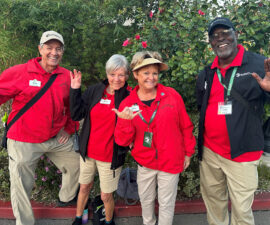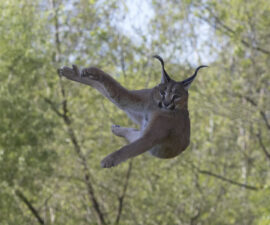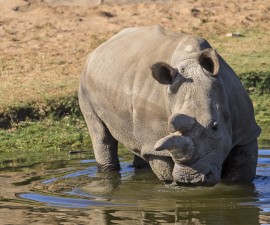I wanted to work with the horticulture department because I love teaching the public about animals and am inspired by San Diego Zoo Global’s conservation work. In a nutshell (or seedpod), I wanted to discover how the flora and fauna departments work together at the Park.
To fulfill common conservation goals, the Safari Park’s animal care and horticulture departments work together to create beautiful, functional, and accurate exhibits. Plants in and around exhibits are often plants native to those animals’ exotic habitats. This exhibit planting improves the public perception of the Park—on a caravan safari, guests will actually feel as though they are in Africa. Endemic plantings also facilitate natural animal behaviors. For example: endemic plants in an aviary means birds can gather the same nesting materials at the Park that they might in the wild. However, this type of habitat-specific planting can be challenging. P.J. Rhodes, lead horticulturist, has to find African plants that are drought-resistant and cold-hardy to withstand California’s challenging climate—and resilient enough to tolerate the animals living among them.
For Gail Thurston, lead horticulturist, the most challenging part of her job revolves around integrating plants with both exotic animals in our collection and native California creatures. Most botanical gardens do not display animals, so plants in these settings have fewer threats. Gail says that “here at the Safari Park [we make a] constant effort to protect our plant material from not only the exhibit animals, but native animals as well: rabbits, squirrels, deer, vermin, and vectors…eat [our plants], dig them up, lay on them, or use them for nesting.” Although the local California mule deer are often the biggest problem, exhibit animals like giraffes can also create big—er, tall—challenges as well. The giraffes love eating the bark on the palm trees planted in the African field enclosures, so the horticulture department had to come up with a creative way to deter them. Many of the palm tree trunks are now enclosed in sturdy mesh to stop those pesky 16-inch giraffe tongues.
However, some of the plants at the Park are meant to be food. Thanks to the Browse Department, the Safari Park supplies the acacia, eucalyptus, bamboo, and fig foliage that feed many species at the Park and Zoo, including giraffes, koalas, giant pandas, and elephants, and many primates. The Safari Park annually produces 20 tons of acacia, 200,750 pieces of eucalyptus, 15 tons of bamboo, and 60 tons of fig foliage! Our sustainable forage supply exemplifies San Diego Zoo Global’s conservation-minded approach.The next time you visit the Park, stop and see the rhinos—but also take the time to appreciate the gorgeous acacia or ficus tree those rhinos are lying under. Most importantly, talk to a horticulturist on grounds. This dedicated team works hard to make the Park beautiful for your enjoyment and would love nothing better than to spend a few minutes sharing their love of plants with you.
Elise Newman is a Caravan Safari guide at the San Diego Zoo Safari Park. Read her previous post, An Insider’s Look at the Horticulture Department: Part 1.







